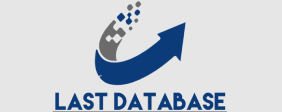In today’s digital landscape, static images alone often fail to capture the dynamic attention of audiences. Integrating animation into your graphic design strategy can breathe life into your visuals, creating engaging and memorable experiences for users. Animation adds an element of storytelling that static graphics cannot convey, making it an invaluable tool for brands looking to stand out. By harnessing the power of animation, graphic designers can enhance user engagement, illustrate complex ideas, and build a stronger connection with their audience.
Enhancing User Engagement
One of the most significant benefits of incorporating animation into graphic design is its ability to enhance user engagement. Animated elements draw the eye and capture attention more effectively than image masking service images, encouraging users to interact with the content. For instance, animated buttons, icons, or transitions can guide users through a website or application, making navigation intuitive and enjoyable. This increased engagement not only keeps users on the page longer but also reduces bounce rates and encourages exploration, ultimately leading to higher conversion rates.
Communicating Complex Ideas
Animation is particularly effective for communicating complex ideas or processes that may be difficult to explain with text or static images alone. For example, infographics that incorporate animated charts and graphs can illustrate trends over time, while transform your photos: expert retouching solutions videos can break down intricate concepts into easily digestible segments. By visually representing information in an engaging way, animation helps users grasp concepts more quickly and retain information better. This clarity is essential for brands that aim to educate their audience or promote more complex products and services.
Strengthening Brand Identity
Integrating animation into your graphic design strategy also contributes to a stronger brand identity. Custom animations that reflect your brand’s style, tone, and values can create a cohesive visual language. This consistency across search engine optimization united states america platforms—such as social media, websites, and marketing materials—reinforces brand recognition and loyalty. Animated logos, for instance, can add a modern touch to your brand identity, making it more memorable. By using animation strategically, brands can differentiate themselves in a crowded marketplace and establish a unique presence that resonates with their target audience.
Improving User Experience
User experience (UX) is a critical factor in the success of any digital platform, and animation can play a key role in enhancing it. Thoughtful animations can provide feedback to users, such as confirming actions or indicating loading processes, which helps create a seamless experience. For example, animated transitions between pages or sections can make the navigation feel fluid and cohesive, reducing the frustration often associated with abrupt changes. By prioritizing user experience through animation, brands demonstrate their commitment to providing a positive interaction, leading to higher satisfaction and retention rates.
Versatility in Application
Another advantage of integrating animation into your graphic design strategy is its versatility. Animation can be applied across various mediums and formats, from social media posts and website banners to email marketing and presentations. This adaptability allows brands to maintain a consistent visual identity while utilizing animation to engage audiences in different contexts. Whether it’s a short animated clip for social media or a more extended explainer video for a website, the potential applications of animation are vast, making it a valuable asset in any graphic design toolkit.
Measuring the Impact of Animation
As with any design strategy, measuring the impact of animation is essential to understanding its effectiveness. Brands can analyze engagement metrics, such as click-through rates and time spent on pages, to assess how animated elements influence user behavior. A/B testing can also be employed to compare static versus animated designs, providing insights into which formats resonate more with the audience. By continually monitoring and refining animation strategies based on data, brands can optimize their graphic design efforts and ensure that animation serves its intended purpose.

